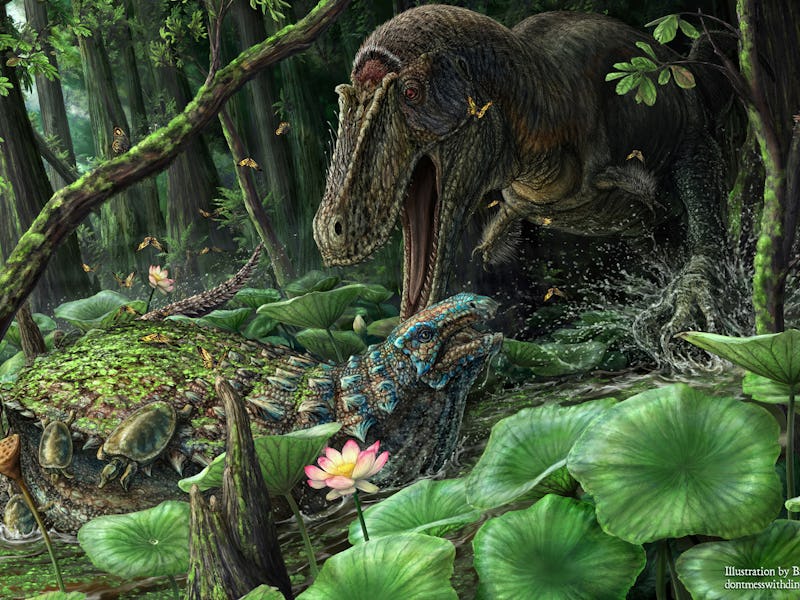Paleontologist Who Named a Dinosaur 'Dynamoterror' Explains Why He Did It
A terrifying meat-eater gets a sweet origin story.

In 2012, a team of paleontologists came across an unprecedented and fearsome discovery in the Menefee Formation in New Mexico. Buried within the ancient slope of shale, coal, and sandstone were the bones of a newly found species of tyrannosaur. On Tuesday, paleontologists officially announced in the journal PeerJ that they’d given this dinosaur a name that lives up to its bad-boy reputation: Dynamoterror dynastes.
Andrew McDonald, Ph.D., a curator at the Western Science Center in California, co-led the excavation that unearthed the D. dynastes. He tells Inverse that when he was a kid he saw the name Dynamosaurus in a magazine and it stuck with him (it is a pretty awesome name). That name isn’t used any more — now we use Tyrannosaurus — but McDonald says that “when my colleagues and I had the chance to name a new tyrannosaur, I wanted to use the Greek word ‘dynamis’ in the name.”
“Terror,” meanwhile, is a familiar Latin word and was fitting enough for a giant meat-eater. McDonald chose “dynastes,” also Latin, because it’s evocative and simply sounded baller. The full name, Dynamoterror dynastes, means “powerful terror ruler.”
“I think for us humans — including paleontologists — tyrannosaurs are among the most imposing and charismatic animals in Earth’s history, and I wanted a name that captured those qualities,” McDonald says.
Right and left frontal bones of *Dynamoterror dynastes*.
McDonald and his team believe that this specific tyrannosaur lived around 80 million years ago. Dinosaur fossils from this time period are rarely found in western North America — only one other tyrannosaur has been named from around that time in this region, a massive species called Lythronax. (That carnivore’s name translates to “gore king,” so this new tyrannosaur is in good company.)
Because it’s so unusual to find these dinosaurs from this place and time, the Dynamoterror adds crucial new data on the anatomy and diversity of tyrannosaurs and represents one of the top predators from the Late Cretaceous ecosystem.
In total, the team found right and left frontal bones from the skull, a bone from the right hand, toe bones, and a bone from the left foot. The frontal skull bones are unlike those of other tyrannosaurs, which was a key indication that the team had uncovered something new. The Western Science center has created 3D digital models of these fossils, available for download here and here as a resource for paleontologists and citizen scientists.
“A new tyrannosaur is quite a thrill of all of us,” McDonald says, “of course from a scientific perspective and also simply for its wondrousness.”
Like learning about dinosaurs? Then watch this video about dinosaur feathers: